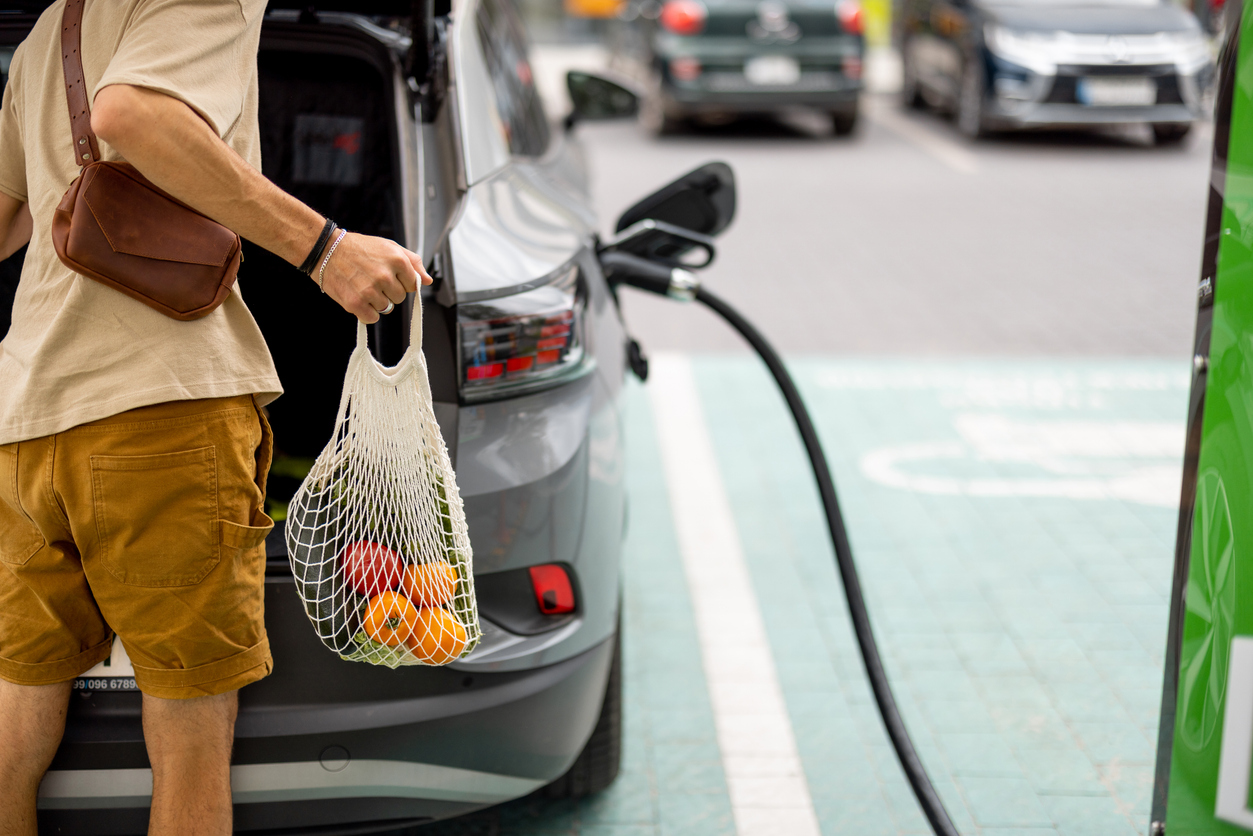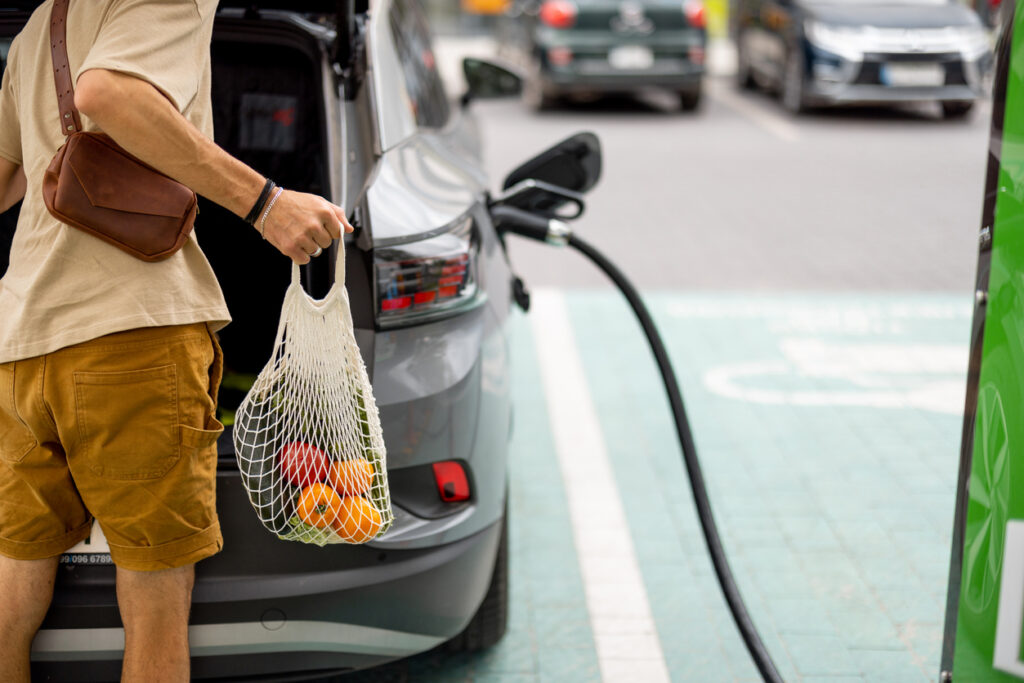
The Human Element in EV Adoption: The Mindset Behind Sustainable Transportation Choices
As conversations around climate change, air quality and energy security heat up, electric vehicles (EVs) are becoming more than a trend — they’re on track to be a practical solution for a more sustainable future. Making the leap to an EV isn’t just about new technology or government incentives. It’s about mindset.
EV adoption rates are climbing, but not as quickly as they could be. The human element — your habits, beliefs and comfort zones — plays a massive role in how and when people choose to adopt new, planet-friendly behaviors. Here’s a deeper look at what’s really driving — or stalling — EV adoption and how you can be part of a more sustainable shift.
It’s About Change
Change is hard. Even when you want to be more eco-conscious, sticking with what you know is easier. Internal combustion engine vehicles have been the norm for over a century. So when EVs entered the mainstream, they weren’t just offering a new car — they were introducing a new way to think about driving, charging, maintenance and even identity.
Affordability is a notable barrier to EV adoption. However, EVs actually offer significant lifetime savings — fewer moving parts mean lower maintenance costs, and electricity is typically cheaper than gas. Psychological resistance remains a hurdle though in promoting a mass transition. For many, the car they drive is tied to their sense of freedom, safety and routine.
Shifting to an EV requires mental rewiring. You can start small by tracking your own driving habits, like daily mileage, gas spending and emissions. Most people find their routines easily fit within the range of today’s EVs, which helps dissolve anxiety about switching.
Cost Perception Still Clouds Reality
While EV prices have dropped considerably and federal tax credits are more accessible than ever, many still perceive EVs as luxury items. The sticker price can feel intimidating, especially compared to a used gas-powered car. However, the upfront cost is only part of the picture.
On average, charging an EV costs just over 10 cents per kilowatt-hour, compared to more than $4 per gallon of gasoline. Those savings add up quickly, especially if you drive often. With global inflation putting pressure on household budgets, it’s no surprise more consumers are rethinking their fuel expenses.
If you’re still uncertain, calculate your current annual fuel and maintenance expenses, then compare them with the average costs for an EV. This exercise can make the long-term financial benefits much more tangible and help you reframe your assumptions.
The Range Myth Lingers
You’ve probably heard it before — “What if I run out of battery in the middle of nowhere?” This fear or range anxiety is one of the most persistent barriers to EV adoption. While it was a valid concern a decade ago, today’s EVs have ranges covering typical driving needs and then some. Many models now offer a driving range of 250 miles minimum on a full charge, and public charging stations are expanding rapidly across the U.S.
To see how this fits into your life, map out your weekly errands and commuting distance. Then, research EV models matching those needs. Most EV drivers charge at home overnight, just like you charge your phone. This shift in thinking — from gas station visits to overnight top-offs — often makes people realize how convenient an EV can be.
Infrastructure Is a Real Concern, but Not a Dealbreaker
The EV sector is still catching up when it comes to charging infrastructure, especially in rural areas. Concerns about limited infrastructure are valid and something federal and state programs are actively addressing. Still, for most U.S. drivers who use their cars for commuting, school runs and weekend errands, home charging handles most needs.
If you live in a single-family home, consider the cost and incentives for installing a Level 2 charger. Many states and utilities offer rebates. Renters can talk with landlords or property managers about potential shared charging solutions. Even if you’re not ready to buy an EV, researching your options gives you a clearer idea of what’s possible and how to plan for a future transition.
Policy Is Driving the Shift
It’s not just drivers who are being nudged toward electrification. Governments are making big moves reflecting the urgency of climate action. Take California, for example. In 2024, an executive order banned the sale of gas-powered small motor equipment, and the California Air Resources Board signed off on a measure requiring all new small combustion engines to be zero-emission by 2028. These policies set the tone for what’s coming — not just in cars, but in the tools and machines industries rely on daily.
From tree care to construction, sectors are already adapting by turning to hybrid and all-electric equipment. When industries of this size begin to electrify their fleets, it’s a sign the technology is here to stay. If entire sectors can shift to electric machinery, it reinforces the idea individual EV adoption isn’t just a personal choice — it’s part of a much larger cultural transition.
Whether you’re a business owner trying to meet compliance goals or an individual weighing your next vehicle purchase, sustainable tech is no longer just a nice-to-have — it’s becoming the norm.
Emotions and Identity Play a Big Role
Car buying is emotional. It’s tied to identity, family life and how people perceive themselves. Some people worry driving an EV will make them appear impractical or trend-led. On the flip side, others embrace it as a statement of values.
If you’re weighing your options, reflect on what matters most to you. Are you passionate about reducing your carbon footprint? Do you want to invest in clean technologies aligning with your values? Thinking through these questions can ground your decision in something more personal and lasting than specs alone.
EV Market Growth Makes it Easier to Transition
A few years ago, if you wanted an electric car, you had to choose between a quirky compact or a high-end luxury vehicle. Today’s EV market has significantly grown. SUVs, trucks, family sedans and sporty hatchbacks are all available in electric models, with more arriving each year. This variety helps break the stereotype of EVs being one-size-fits-all.
Large sectors are also taking advantage of the EV market’s growth. The U.S. construction industry — valued at nearly $1.8 trillion in 2022 — is shifting toward compact, all-electric, zero-emission machines because they’re more eco-friendly but also quieter, more efficient and less maintenance-intensive.
Take a look at your current vehicle’s features. What do you love? What do you actually use? Use those insights to research similar electric options. The growing EV market means you’ll likely find a car fitting your lifestyle.
You Don’t Have to Go All-In Right Away
Another barrier to EV adoption is the idea you have to go all-in by buying a new EV, installing a home charger and never touching a gas pump again. This is not true. Flexible options like plug-in hybrids (PHEVs) offer electric driving for short distances and gas for longer trips. They can be a great bridge if you’re not ready to make the full leap.
Explore certified preowned EVs or PHEVs to test the waters. These vehicles are often more affordable and still eligible for some incentives. Taking one for a test-drive, or even renting an EV for a weekend, can also ease your transition and build confidence.
To truly maximize the environmental benefits of EVs, you’ll need to consider powering them with renewable energy sources. While EVs inherently reduce tailpipe emissions, charging them using electricity generated from fossil fuels only shifts the source of pollution. Home solar panels, community solar programs, and green energy plans offered by utilities can ensure your EV is running on clean, sustainable power. As EV adoption increases, it’s crucial to address the strain on existing power grids. By embracing renewable energy solutions, you can support a truly sustainable transportation ecosystem and reduce the overall environmental impact.
You Hold the Key to Sustainable Transportation
EVs are part of a movement toward a cleaner, more resilient future. However, the success of the movement doesn’t hinge on policy or technology alone — it hinges on people. Your choices, values and willingness to adapt shape the EV landscape as much as anything else.
Whether it’s cost, convenience or comfort holding you back, chances are there’s a way forward that’s right for you. Start where you are, gather facts and stay open. The road to a more sustainable lifestyle isn’t paved overnight, but every drive counts.




Post a comment